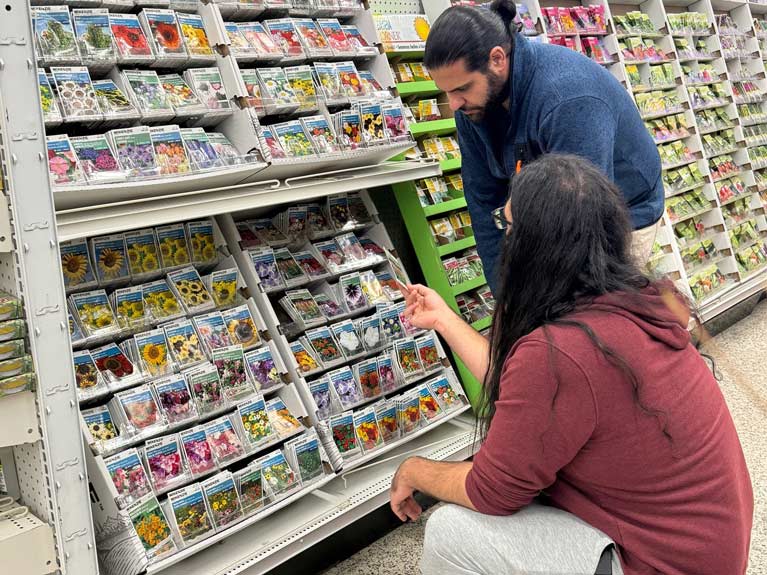
Gardeners across Canada are beginning to plan their gardens. Seed packets on store shelves are providing inspiration for beautifully designed outdoor spaces. There are seemingly limitless colourful plants and flowers to choose from, especially with online ordering providing even more options. However, it is important to keep in mind that some seeds and plants you may come across are invasive species.
Invasive plants crowd out other plants on your property, can spread uncontrollably beyond the garden, outcompete native plants, and have negative impacts on ecosystems. By following these five practices, we can help preserve the health of native plants, reduce invasive species, and promote biodiversity.
- Learn which plants are invasive in your area and avoid adding them to your garden.
Certain plants pose challenges in different regions of Canada due to climate, terrain, and other environmental conditions. Therefore, it is important to look at information specific to your area. There are many online and print resources available throughout Canada that can help determine which invasive plants to avoid in your region.
- When purchasing seed packets, look carefully for invasive species.
This is especially important when purchasing “wildflower” seed mixes. These often contain invasive species like bachelor’s button and baby’s breath. Pay attention to both common and scientific names, as well as alternative names. There are resources, such as the Grow Me Instead Guide created by the Ontario Invasive Plant Council, that are a great way to begin learning about invasive plants.
- Consider choosing plants that are native to your area.
Native plants are a beautiful addition to your garden, and they have adapted to grow well in their habitat and support pollinators and local wildlife.
- Inspect your property for invasive plants.
Regular monitoring will allow you to spot invasive plants and prevent them from gaining a foothold and spreading in your garden and yard. This will also help limit their spread to other areas. Refer to plant management guidelines for information about how to control invasive plants on your property. Be sure to report any suspected sightings to EDDMapS or iNaturalist!
- Learn how to properly dispose of invasive plants.
Proper disposal of invasive plants is essential to prevent them from spreading. Never discard garden waste in nearby natural areas. Avoid composting invasive plant material and seeds as they can sometimes survive this process. If you have a seed packet with invasive species that you’re looking to dispose, put the seeds and packaging in a sealed plastic bag, then put this inside a second sealed bag, and place them in your regular garbage that goes to a landfill. For invasive plant materials, dispose in construction grade plastic garbage bags, set out on a hard surface for one to two weeks in the sun and place in household waste. Refer to regional or provincial management guidelines for more specific information on disposal.
By knowing which invasive plants to avoid, planting native species, monitoring, and eliminating invasives, and properly disposing of plant material, gardeners play a crucial role in preserving the health and biodiversity where we live. For more information on invasive species, please visit the Invasive Species Centre website.
Resources
- Biodiversity in the Backyard – How to Make Your Own Biodiversity Garden to Grow Native Plants and Prevent Invasive Species
- Invasive Plant species profiles
- Ontario Invasive Plant Council’s Best Management Practices Series
- Ontario Invasive Plant Council’s Grow Me Instead guides
- What Should I Plant? Native Wildflowers by Region
